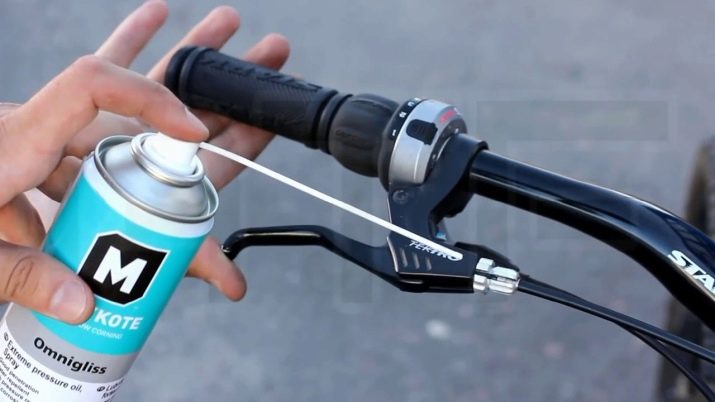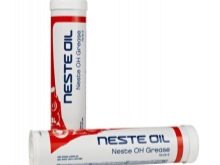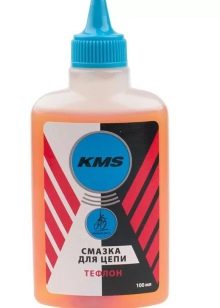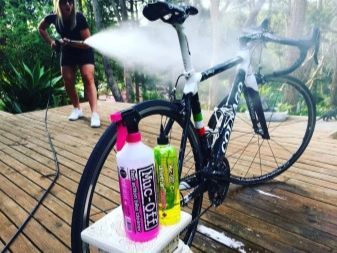Bicycle grease: overview of types and recommendations

A bicycle, like any other means of transportation, needs some maintenance. This allows you to improve its performance, as well as significantly increase the service life.
Lubrication of parts is an essential and essential part of this maintenance. And each of them requires a certain tool and compliance with the rules for its use.
In this article, we will tell you in detail about the main types of lubricants and their representatives. We will also share some recommendations on how and when to perform this procedure.



Species overview
There are two main functions that bicycle lubricants perform:
- protect parts from moisture, preventing corrosion;
- reduce the level of friction of moving parts.
Failure to comply with timely maintenance leads to the appearance of rust and the destruction of individual elements. However, they will often jam, making it difficult to move. The protective layer of lubricant significantly reduces the risk of these problems.

There are three types of bicycle lubricant today. Let's take a closer look at each of the groups.
Thick
They are also called consistent. They are characterized by a long service life and good tolerance to weather conditions such as frost or heat.
They include substances of a dense consistency, which are supplied in cans or tubes. Bicycle lubricants from this group are:
- calcium;
- lithium;
- graphite;
- vaseline.
Experienced cyclists use them to handle slow moving parts such as bearings and arm bushings. It is also best to coat the chain with grease if you decide to "mothball" the bike for long-term storage.

Calcium remedies when applied, they retain their properties for a long time and adhere tightly to parts even during precipitation. They perfectly protect the bike from corrosion and allow it to withstand temperature fluctuations from -30 to +50? C.
Lithium greases have practically the same properties as calcium, but their temperature range is much wider, from -50 to +150? C. However, they have one drawback - a negative effect on aluminum due to the occurrence of a chemical reaction.
Among the graphite substances, prevailing graphite powder. It is sold as an oil, but turns to powder when applied and dried. This lubrication greatly facilitates the movement of parts.



But the group of thick lubricants has two serious disadvantages:
- they are difficult to apply and get rid of excess;
- dust and dirt adhere to the elements lubricated with them, which also does not benefit the bicycle.
Liquid
Known for ease of application to various parts in the most difficult to reach places. But for the same reason quickly drain from lubricated elements.
Liquids include simple machine oils sold in small oilers or cans. Due to their consistency, they easily penetrate into hard-to-reach places, and the excess can be easily removed. However, oils are quickly washed out with water. That's why do not use liquid lubricants to coat exposed elements.
Better to apply them to brake levers and levers, derailleurs and bearings. But don't use too much oil. Otherwise, dust will adhere to the parts, which will impede their movement.

Two-component
They have incorporated the qualities of the above two varieties. They are made on the basis of thick lubricants with the addition of a thinning agent.
Lubricants are excellent for use on prefabricated bike parts. This group includes three types of substances:
- silicone;
- teflon;
- wax.
Most of these lubricants are available as spray, aerosols, or liquid bottles.

Silicone lubricants can be found in three consistencies at once, including thick and thin... Therefore, they can be used for both open parts and hard-to-reach ones. Moreover, such a lubricant does not attract dust and does not destroy rubber.
Teflon funds retain their properties for a very long time and adhere firmly to the surface of the elements. They do an excellent job of repelling dust, dirt and moisture.
Less persistent are wax lubricants, but they provide reliable protection against corrosion.



As you can see, two-component substances have all the properties of thick lubricants, but at the same time they are practically devoid of their disadvantages. For this reason thick lubricants are becoming less and less in demand today.
How to lubricate different parts?
As you already understood, it will not work to lubricate all the mechanisms of the bicycle with one tool, otherwise you can harm them. You will have to spend money on several different lubricants, but such is the price for long-term operation.
The chain is the first element to remember to lubricate... Without this, it will soon begin to sag, and the sprockets and cassettes on the rear wheel will begin to be damaged. Two types of substances are suitable for the chain, depending on the weather:
- for dry - liquid grease that repels dust, apply every 100 km;
- for raw - thick grease, which is not washed off by precipitation, to renew after 150 km of run.
The best chain lubricants are wax and silicone compounds. To facilitate the task, you can purchase a special device called a chain link. First of all, a chain washing agent, for example, kerosene, is poured into it. After the first run of the chain through the device, the substance inside is replaced with lubricant, and the chain is run in the same way a second time.

Bearings - Must be lubricated approximately once a year. This is the life span of the lithium grease that is ideal for this part.First, the bearings also need to be cleaned with kerosene. However, the grease is not applied to them, but to the cups, where the bearings are then inserted.
Wheel hubs - if they have open bearings, then the process is as simple as possible: clean the parts from dirt, and cover with a new compound... But there are models with bearings located inside the cartridges. Experts recommend simply replacing them with new ones after a certain period of time.
Fork - best use silicone grease for its legs... To carry out this procedure, the wheels must be removed.


Bottom Bracket - In certain cases, needs lubrication to keep the bike from squeaking. The fact is that in modern bike models, the bearings are located inside the cartridge, where they are protected from moisture and dust. In fact, the cartridge is not intended to be disassembled. However, when driving for a long time off-road, the same unpleasant creak appears. To avoid having to replace the carriage with a new one, it can be opened, cleaned and lubricated.
Brake cable - just two drops of oil are enough for it, one at the entrance, the second at the exit. Then you just need to switch the speed, and turn the pedals. Use a liquid or spray to lubricate the brake.
Steering column - with it the situation is the same as with the carriage... Modern bicycles are equipped with bearings located in a cartridge. Such steering columns are called integrated.
During long journeys or off-road driving, you need to open the cartridges from time to time and lubricate the bearings.



How often should the procedure be carried out?
The answer to this question is quite simple - it must be lubricated every season. This is especially important after winter if you have sent your bike for storage. It takes no more than a couple of hours to put the bike in order after hibernation.
Some cyclists give their bikes to mechanics but it is better to learn how to carry out this procedure on your own so as not to get trapped at the most inopportune moment... But if you completely neglect lubrication, then be prepared that one day the parts will begin to fail one after the other.
Seasonal lubrication includes all parts except the chain and fork. Chain lubrication is usually at the discretion of the owner, who can determine how often to lubricate the chain. Or you can just wait until the chain starts to squeak. But this does not mean that she has reached a critical point. A dry chain can withstand up to 30 km of driving.


And there is also an opinion that the gear cables should not be lubricated at all, otherwise dirt and dust will stick to them, making it difficult to move. However, many professional mechanics still do this, but use substances that repel foreign objects.
In general, it should be noted that most of the small parts must be lubricated so that they do not sour. This is common for items such as seat posts, pedal threads, stem bolts and others. Unscrewing sour parts can be very problematic.

Recommendations
And finally, a few tips from experienced cyclists on how to properly lubricate.
First of all, you need to get your bike in proper condition, that is, wash and clean. To do this, you need simple tools at hand: a bucket, hot water, dishwashing liquid, a brush, and a sponge. It is also worth equipping yourself with a toothbrush, which is very suitable for cleaning hard-to-reach places.
Cleaning can be quick or major... In the first case, it is enough to walk over the frame with a damp cloth and wash the chain without even removing it. In the second case, the chain will still have to be removed and placed for a while in a container with a cleaning agent. While she is there, you need to remove the rear wheel, rinse the cassette, disassemble the rear derailleur foot, and also pay attention to all other important details.
You can start the lubrication itself with any component.Just remember that some fragments like stars or cassettes are recommended to be lubricated several times in a row.


When choosing lubricants, be guided by the current season, precipitation and air temperature. As already mentioned, liquid products are easily washed off with rain, and some of them are not adapted to extreme cold or, conversely, heat. Also, choose a lubricant based on how often you use your bike, whether it's short trips in town or long cross-country trips.
The chain is a very important part of any bike... Therefore, you should not treat it with lubricants that can harm it. Thick substances will not be able to provide the required result, since they are unable to penetrate into all the holes in the chain. It is not recommended to use automotive oils and oily liquids, which easily attract dust. Otherwise, you will have to re-clean the chain after two or three trips.


In the end, I must say that there are many different products on the market today. And their choice often depends on the specific model of your bike and its features. It's better to take the time to study the topic in more detail in order to create the perfect set of lubricants for your bike. Then it will serve you for many years.
For information on how to choose a lubricant for your bike, see the video below.








